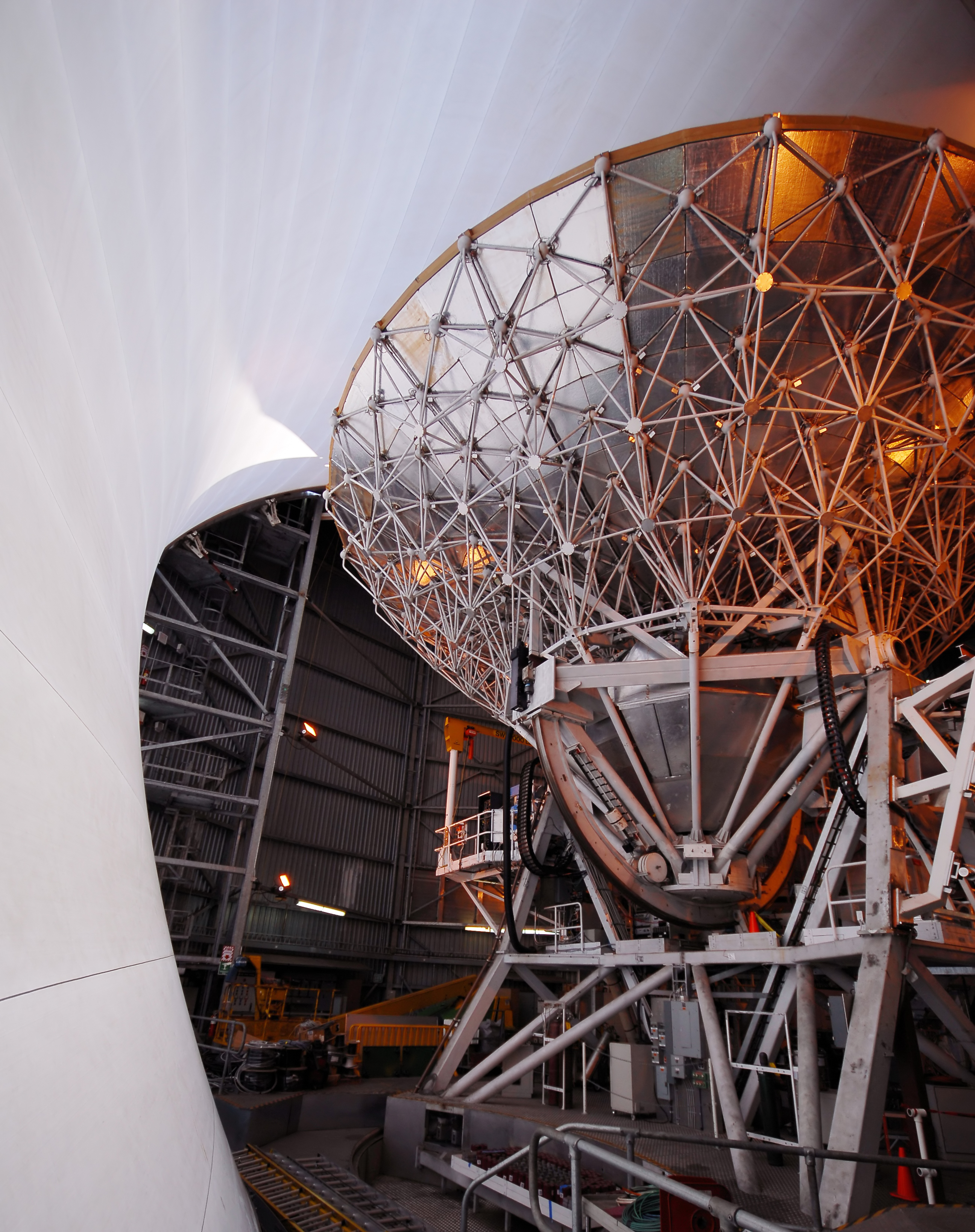Daily Image
05-01-2016The East Asian Observatory
| Submitter: | Rob Millenaar |
| Description: | On the occasion of a recent visit to the Hawaiian Big Island that came about because of family matters (what better reason to visit Hawaii than for a wedding), I remembered the days of UK/NL cooperation in advanced astronomy projects. In the 80's of the previous century this partnership came to full fruition with such wonderful projects as the Herschel and Newton optical telescopes on La Palma, and the ground breaking sub-millimetre radio telescope on top of Mauna Kea in Hawaii: the James Clerk Maxwell telescope, or JCMT as we came to call and love it. Together with Leiden University, SRON in Utrecht and Groningen, ASTRON has played an important role in the history of instrumentation development for the JCMT, and it is with that background that I paid a visit to the familiar headquarters of the institute, formerly known as the Joint Astronomy Centre, JAC in Hilo. Familiar to me because I worked there in the nineties and have come back many times since. The first thing of note is that the centre is now called: East Asian Observatory (EAO). This reflects the fact that nowadays funding for the JCMT primarily comes from China, Taiwan, Japan and South Korea, after support from UK, Canada and The Netherlands dwindled down over recent years. This is a fortunate situation where, just in time, the future of the JCMT was secured by attracting these new custodians. The EAO has taken over the operations of the JCMT since earlier this year. The other telescope that was previously run by the centre, the infrared UKIRT telescope, already had its future secured by being adopted by the University of Arizona. The EAO will likely continue to take care of the engineering and IT support for UKIRT. It is not just for my personal nostalgic reasons that I welcome the JCMT's new lease on life. The existing instrumentation and capabilities are first rate and keeping those alive will be a great benefit to the new user base of Asian astronomers in need of high sensitivity continuum, spectral and wide field imaging at the highest radio frequencies. First mention deserves SCUBA-2, a large sub-millimetre camera, actually a focal plane array consisting of 5120-pixel superconducting sensors, operating at 450 and 850 microns. This is a spectacularly successful mapping machine, producing wonderful continuum images of the cold radio sky. Next is JCMT's capability to participate in interferometry experiments. Sub-millimetre interferometry was pioneered at the JCMT using the ASTRON-built DAS backend, that combined auto and cross correlation modes. In later years I was also involved in the development of interferometry together with SMA and CSO on the mountain. It is good to see this capability still being used in successful programmes. Receiver-wise the JCMT offers three heterodyne instruments (A band, 12 pixel B band array and D band), and the Canadian ACSIS auto-correlator has replaced our DAS a long time ago. The photograph shows the 15 m diameter JCMT dish from the inside of the building, with its protective yet transparent membrane on the left of the frame. When I visited the headquarters it was good to talk to so many old friends and smell the same tropical scents in the corridors that I got used to so many years ago. We wish the EAO a successful future, facilitating lots of high quality science, and continued funding to keep operating and to develop new instrumentation to remain at the forefront for a long time. Please visit: www.eaobservatory.org Rob Millenaar |
| Copyright: | Rob Millenaar |
| Tweet |  |
